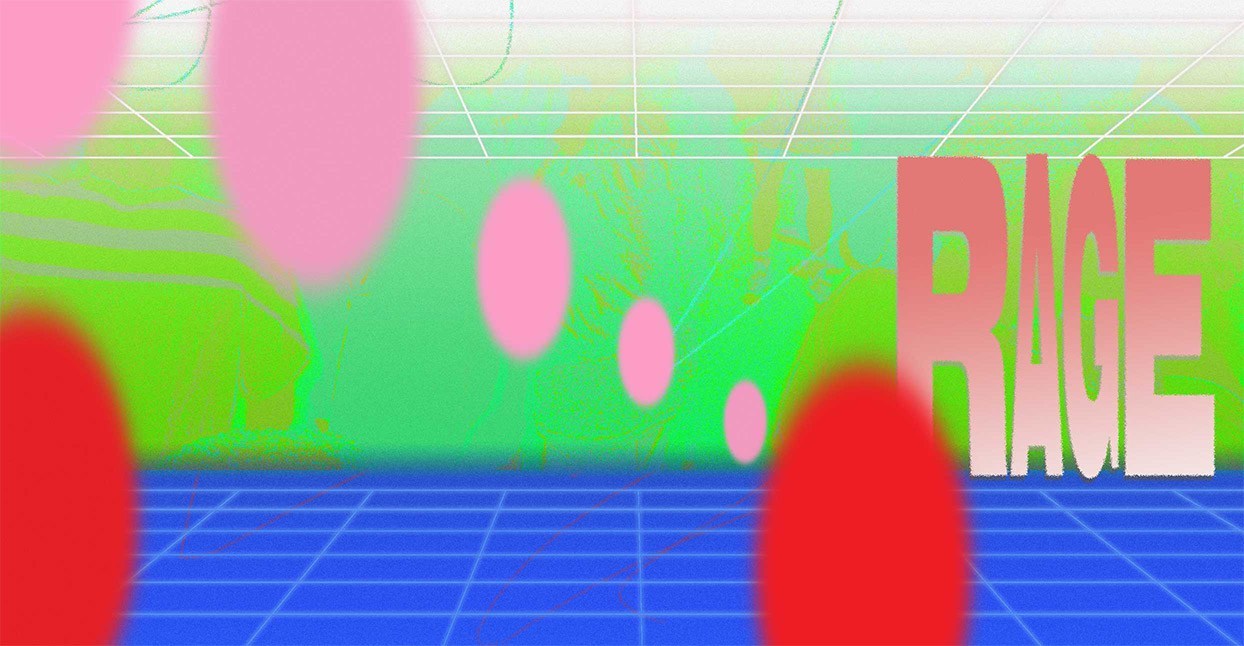
The London dance party Rage lasted barely over five years, but the Thursday night event was the lifeblood of U.K. rave culture. It was held weekly in Heaven, a gay club in the heart of the city. And though it was owned by no less than Richard Branson, it was appealingly dark and dirty—the sight of rats and cockroaches was not uncommon, the floors were coated with a fine layer of grime, and the clientele was rough and ready. Drag queens, b-boys, suburbanites, and ravers of all stripes treasured their hard-to-come-by membership cards, and communed weekly to celebrate one of the most concentrated expressions of the U.K.’s love affair with ecstasy. But Rage wasn’t just about hedonism: the music and culture of the club was taken seriously. The residency of two south Londoners known as Fabio and Grooverider—celebrated on a new compilation series honoring Rage’s 30th anniversary—created a kind of cultural pressure cooker, where imported American house and techno mutated week by week into rave, jungle, and drum & bass.
Of course, as with anything in clubland, there is no single origin point. Heaven, the venue where Rage was held, had been a staple of London’s underground scene for several years before the acid house explosion, with DJs who spun only disco and hi-NRG, but also alternative and industrial electronic music, as well as early house and techno. One of the club’s regular promoters of alternative nights was Kevin Millins, who had been active in the local music scene since the early ’70s; he had also run The Roxy, which was ground zero for the U.K. punk scene.
“Kevin had done everything,” says James Horrocks, who ran various nights himself, along with working the door at Rage. “He even put on Joy Division at Heaven. He absolutely saw acid house coming—he was right on it.” When Paul Oakenfold’s club night Spectrum wrapped its run at Heaven at the end of 1988, Millins was brought in to start a new night.


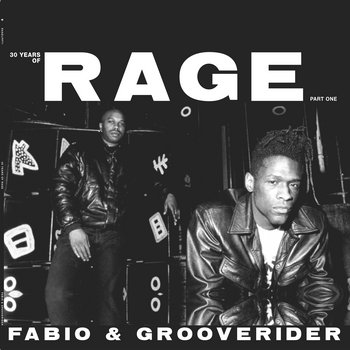

2 x Vinyl LP

At first, Rage was just another house night, its DJs hailing from a range of scenes: Mark “S’Express” Moore had been spinning in gay clubs, the late Colin Faver belonged to the post-punk/alternative world, and Trevor Fung was a childhood friend of Oakenfold’s from the Balearic scene. The night quickly gained a reputation as a down and dirty rave-up. “Everyone was there—it was like being on the street, really,” says Horrocks. “It was grimy, it was dark, and people of all sorts went to misbehave. Because it was Thursday, these weren’t part-timers just out for the weekend, they were hardcore party people.”
The night’s identity was cemented with the arrival of Fabio and Grooverider in 1989. The two had taken the acid house world by storm after a late-night pub basement residency in Brixton led to them playing at the mega-raves in fields and warehouses outside London. But they weren’t yet fully established. “We still had normal jobs,” says Fabio. “We were just playing raves all weekend, having a great time. We never thought it would be a job or anything.”
Grooverider says of their naivety: “We’d get like 30 quid for playing a rave to thousands of people. I’m not even joking, there’d be some promoter guy with carrier bags full of cash, and he’d stick 30 pounds on the table and go, ‘There you go lads, great job.’ [laughs] We didn’t really have a clue.”
But one of those chance encounters turned out to be their ticket to the next level. “There was this girl who we met,” says Fabio, “who went, ‘Oh, I love you, I love you, I can get you a gig, I know so-and-so.’ She was a classic raver, just off her head—or so we thought, anyway—and we didn’t think anything would come of it. But then a couple of days later, she calls up and goes, ‘OK, come and meet the guys from Heaven, they want you to audition.’”

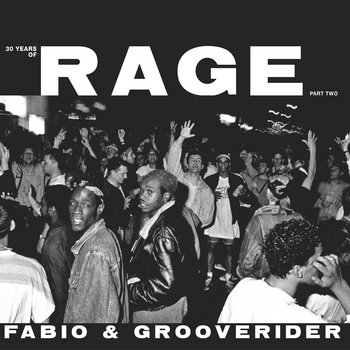
2 x Vinyl LP

The two were given a slot in the club’s smaller upstairs room, but very quickly their mixing skills and fearsome selection—heavy on Detroit and Belgian techno, U.K. bass, and the NYC breaks of Todd Terry and Frankie Bones—led to a residency in the larger room downstairs.
“It was just a darker sound than other places,” says DJ/producer Noodles, who ran a record stall in Rage at the time. “Fast Eddie, Joey Beltram, tracks like ‘French Kiss,’ Orbital’s ‘Chime,’ ‘Art of Stalking’…and the crowd was off their heads, proper dancing. But they were serious about the music.” “Serious” is a word that comes up again and again when people talk about Rage. The crowd was notoriously tough.
“As a kid from suburban Surrey,” says Rage regular Adam Rostom, “it certainly opened my eyes. There were scary people, happy people, drag queens, guys in tracksuits… I got into the VIP toilets once, and realized there were mirrors designed for looking at other guys’ cocks round the urinals!” But the music united all of those diverse elements, and the club played on the seriousness of the atmosphere.
“The main floor was dark, says Owen Snee, another regular. “Sometimes this red light at the back of the venue would be the only light on. Strobes might come on when there was a rise in the beat, then off you went again.”

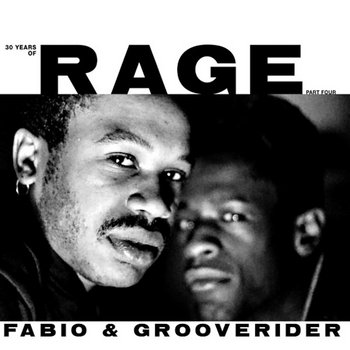
2 x Vinyl LP

Beginning in 1989, the sound sped up and got heavier in the bass. It never stopped doing so. Like many in the crowd, Fabio and Grooverider had a hip-hop background, so more and more breaks were introduced. “You had records like Debbie Malone’s ‘Rescue Me’ coming in,” says Horrocks, “and the sub-bass from that would shake the crowd. That became this huge underground record. Then everyone wanted these local records—they’d queue at the little dance shops to get the white labels. It became this really fast-moving, recognizably U.K. thing.”
Grooverider agrees: “It was about chasing that intensity. Because we had that intense feeling to begin with, people just wanted more. Darker, more bass, faster beats—just trying to keep that feeling.”
“We never played hardcore though,” says Fabio. “We weren’t into that happy stuff, sped-up vocals and pianos. We didn’t really think about a name for what we were doing. It was just us DJing, trying to do our job well.”
For those few years, the space became synonymous with these new musical developments. “I think maybe because Heaven was quite a raw space, that helped the sound,” says Snee. “Even the soundsystem wasn’t as polished as they are now, [so you got] that sub-bass that sort of swept through you.” DJ Storm, now a drum & bass legend, says, “Seeing Fabio and Grooverider the first time infected us completely. Rage become our religion.” Her DJ partner, the late Kemistry, would notably take her then-boyfriend Goldie to Rage for the first time, leading to his total conversion to rave.

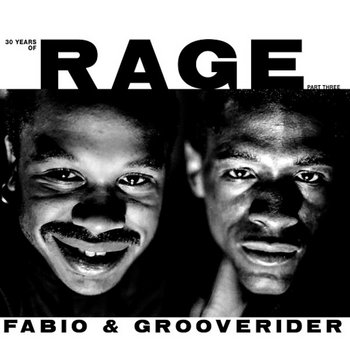
2 x Vinyl LP

“The first time, he just stood there upstairs looking really tense,” laughs Storm. “He’d come back from Miami, where white people had one club, Hispanic people another club, black people another club. He’d missed acid house, all these people mingling without hardly any trouble freaked him out! But when we finally persuaded him to see Fabio and Groove, that was it! We went home and he was like, ‘OK, we’re starting a label, we’re going to do this music, you’re going to DJ,’ and the rest was history.”
In some senses, it was amazing Rage held together as long as it did. With such a cast of reprobates from across the social spectrum crowding through its doors, it was always an edgy affair. But in the end, its only real problem was its own success. “Eventually,” says Horrocks, “I think the DJs just got too big in their own right to be doing it on a weekly basis. Fabio and Grooverider were pretty much running it by then, and Thursday night they’d be starting their weekend travels to play halfway round the world! I think that was really why it became unsustainable.”
The DJs confirm that. “We were getting bookings everywhere,” says Fabio, “and so were our friends we DJed with. Rage definitely helped us get there!”
“We definitely felt like Rage defined the sound of its time,” says Grooverider. “And it wasn’t long after that that Metalheadz [Goldie’s legendary Sunday night club, where Grooverider and Kemistry & Storm were among the residents] started, which did the same thing again. And Fabio started his thing, Speed, with LTJ Bukem. To be part of two things like that in a short time was pretty nuts, especially since we started not really knowing what we’re doing. We definitely feel fortunate to have been part of all that.”


2 x Vinyl LP

Since then, the heavyweight bass tones, the techno influence, and the rave energy that were condensed in Rage’s pressure cooker have found their way into dozens of U.K. and global underground sounds. But that moment in time remains etched into the memories of the people who were there. “It wasn’t even just dark,” says Noodles, “you could hear space cadet stuff like Leftfield, big rave anthems, all sorts. The way they played it helped define the U.K. sound for all of us.”
“Did any of us know,” muses Snee, “that those early songs and records would still hold strong all these years later? Probably not!” But as the new compilations show, they truly do. In that dark, cockroach-infested club round the back of a mainline station in the middle of London, not only was history born, but a sound that still reverberates around the world today.








